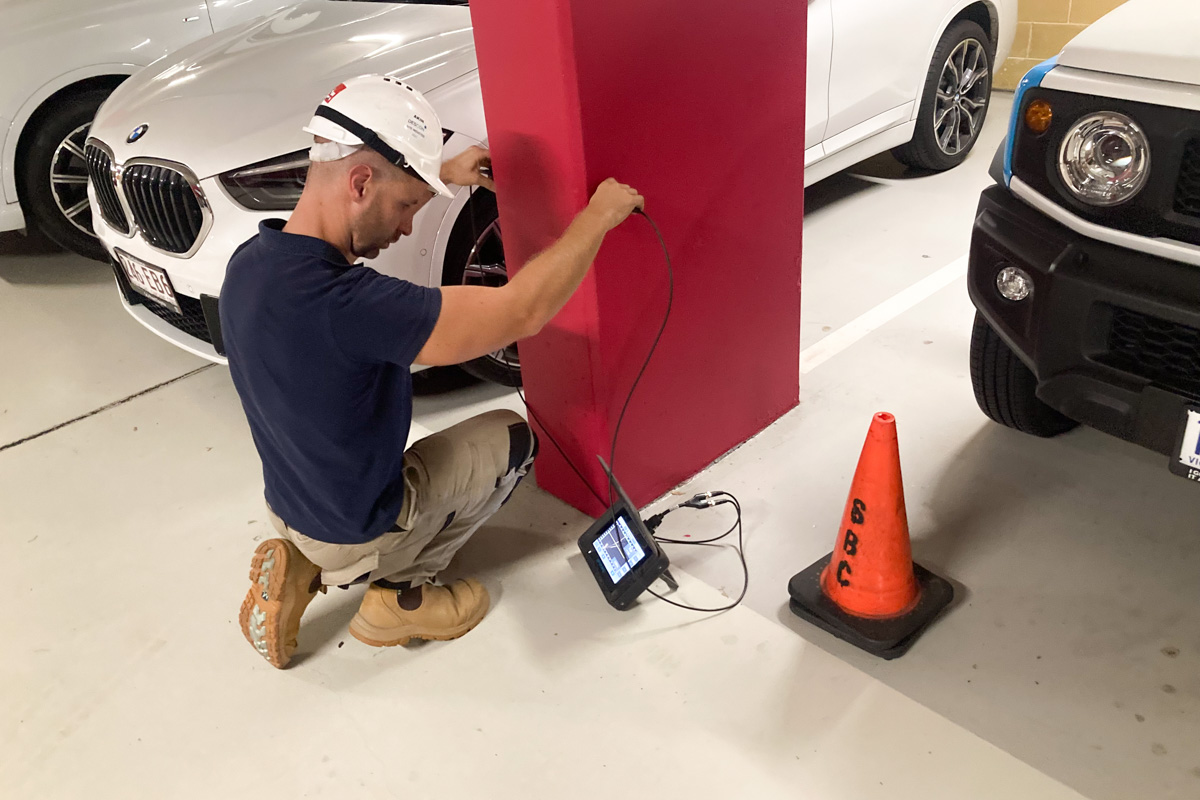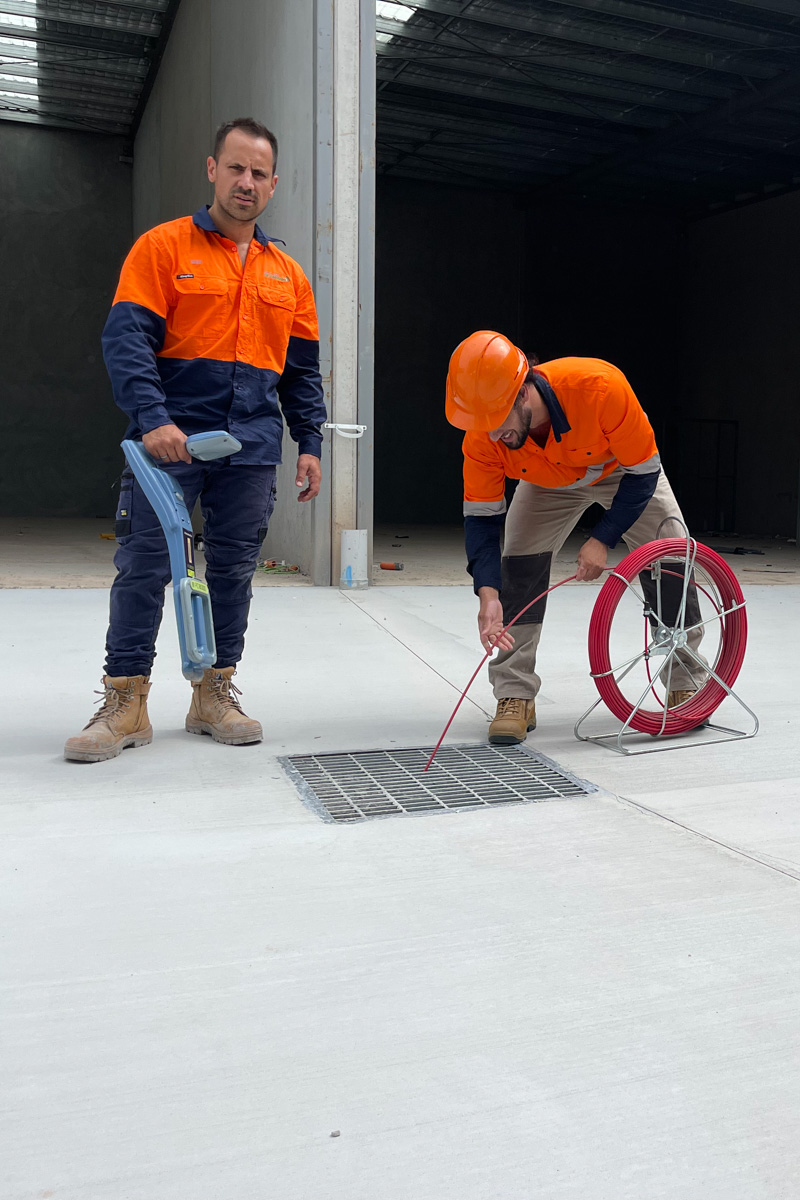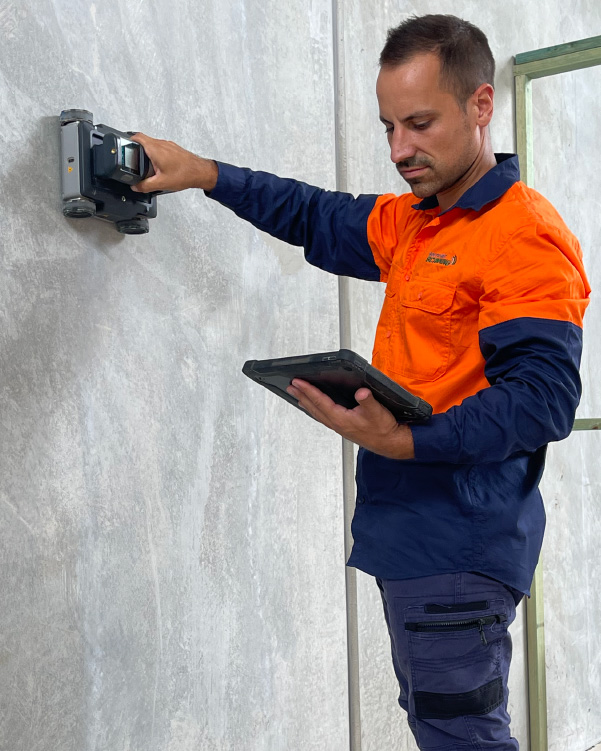Understanding Concrete Scanning
Concrete scanning is a highly effective non-destructive method that utilises cutting-edge ground penetrating radar (GPR) technology to create a comprehensive digital image of the internal structure of concrete. By employing this advanced technique, it becomes possible to uncover and visualise hidden features within the concrete slab, including wires, rebar, conduits, and even potential voids. These valuable insights are crucial for ensuring the safety and success of your Gold Coast construction project, as they help identify and mitigate any potential risks or structural issues that may arise. With concrete scanning, you can confidently proceed with your project, knowing that you have a thorough understanding of the concrete's internal composition and any potential challenges that may need to be addressed.

The Need for Safety in Construction
Accidental damage due to drilling or cutting into embedded objects, such as electrical wiring or plumbing pipes, can result in costly repairs, project delays, and even serious injuries. By conducting a comprehensive scanning of concrete structures beforehand using advanced imaging technology, such as ground-penetrating radar or thermal imaging, you can significantly mitigate these risks. This proactive approach ensures a safer and more efficient construction process by identifying potential hazards and allowing for proper planning and precautionary measures to be taken. Don’t underestimate the importance of thorough scanning and safeguard your construction projects from unnecessary setbacks and hazards.
Enhancing Construction Efficiency
Concrete scanning plays a crucial role in enhancing construction efficiency. By precisely identifying the exact location of embedded objects, the construction team gains valuable insights to plan and execute tasks with utmost precision. This meticulous approach not only minimises the risk of expensive errors but also helps in avoiding project delays, ensuring smooth progress and successful completion.
Adherence to Building Codes and Standards
Moreover, concrete scanning is of utmost importance when it comes to ensuring full compliance with building codes and standards. Authorities and regulatory bodies often necessitate the provision of highly-detailed images showcasing the internal structure of your building’s concrete. This meticulous inspection is carried out to guarantee not only the stability but also the safety of the structure, leaving no room for compromise. By employing advanced scanning techniques, potential issues such as cracks, voids, or other forms of deterioration can be accurately identified and addressed promptly, ensuring a solid foundation for your construction project.
Preventing Long-Term Structural Issues
Over time, structural issues that go unnoticed can lead to catastrophic consequences. That’s why concrete scanning plays a crucial role in identifying potential problems at the earliest stages, enabling proactive measures to reduce the likelihood of future structural failures. By employing advanced scanning techniques and technologies, professionals can uncover hidden defects and vulnerabilities, ensuring the long-term integrity and safety of structures.

Applications of Concrete Scanning
Concrete scanning is a versatile tool with a wide array of applications that span across various sectors within the construction industry. For instance, it’s pivotal in bridge construction to identify potential voids or assess the condition of pre-existing reinforcement within the concrete. In road construction, concrete scanning aids in detecting and mapping underground utilities and conduits, thereby preventing accidental damage during excavation or drilling operations.
Within commercial building projects, concrete scanning is employed for safe and precise location of post-tension cables, rebar, and conduits before any cutting or colouring activities. It’s also invaluable in historical building preservation where non-invasive inspection techniques are essential to maintain the structural integrity of the monument.
In airport construction, concrete scanning is used to detect foreign objects or anomalies within the runway pavements that could potentially compromise safety. Moreover, concrete scanning is also regularly used during renovation projects to determine the thickness of slabs and locate embedded objects, thereby facilitating precise planning and execution.
Overall, the numerous applications of concrete scanning underline its integral role in ensuring safety, efficiency, and compliance in diverse construction endeavours.
The Process of Concrete Scanning
The concrete scanning process begins with a site assessment. Skilled technicians use ground penetrating radar (GPR) technology, emitting electromagnetic waves into the concrete structure. These waves bounce back upon hitting an object or different material, creating a detailed image of the slab’s internal structure.
The GPR device, resembling a pushcart, is placed on the concrete surface. As it moves, it sends and receives high-frequency radio waves. This data is processed and displayed on a screen for real-time analysis.
Objects and inconsistencies in the concrete cause changes in the electromagnetic signal’s velocity and energy, detected by the GPR. These anomalies appear as visual cues on the device’s monitor, providing insights about the concrete’s composition.
Data interpretation is crucial in concrete scanning. Skilled professionals identify and understand the objects causing the reflected signals, such as rebar, conduits, tension cables, or potential structural issues.
Concrete scanning is an essential diagnostic tool, revealing hidden features without causing damage. It enhances safety, efficiency, and compliance with building standards in modern construction.

Why South East Scanning
Choosing South East Scanning for your concrete scanning needs is an excellent decision for several reasons. First and foremost, our team of experienced professionals provides reliable and accurate scanning services, implementing advanced technologies like ground penetrating radar (GPR) for precise data interpretation. We take pride in our commitment to safety, striving to uncover hidden objects and potential issues within your concrete structure that could pose risks. At SouthEast Scanning, we ensure full compliance with building codes and standards, a factor of utmost importance in all construction projects. Finally, our versatile scanning services cater to a variety of sectors within the construction industry, including bridge and road construction, commercial building projects, historical building preservation, airport construction, and renovation projects. By choosing South East Scanning, you are investing in a safer, more efficient, and compliant construction process.
Summary
Concrete scanning is essential in modern construction, ensuring safety, efficiency, and compliance across various sectors. Utilising technologies like Ground Penetrating Radar, it identifies hazards and structural issues proactively, mitigating risks and preserving long-term integrity. From bridge and road construction to commercial buildings and historical preservation, concrete scanning is a vital diagnostic tool. With meticulous planning and precise execution, construction can progress smoothly and in compliance with regulations.